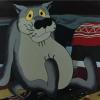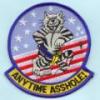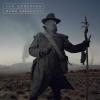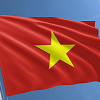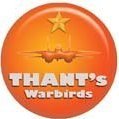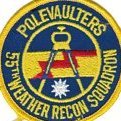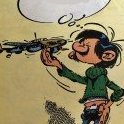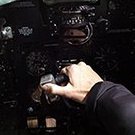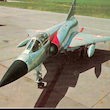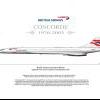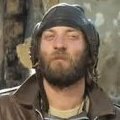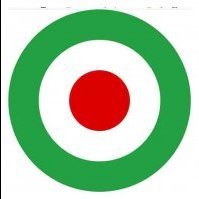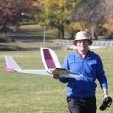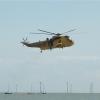Leaderboard
Popular Content
Showing content with the highest reputation on 14/04/19 in all areas
-
Hello, I finished this early this morning, just added two small aerials to the nose and that was it. This is the High Planes kit, bought decades ago and restarted in 2016. I added two Airfix DC3 engines as replacements for the basic kit engines, scratch built the three aerials and mast, the set of photo-etched fuselage mounted aerials were liberated from the Encore kit (which was just a reboxing of the horrid Frog kit) and needed some alterations to make them suitable for the High Planes kit. The model was finished using Sovereign paints which I highly recommend, harder work than the Special Hobby kit but this is a more accurate kit than the Special Hobby offering!42 points
-
This is my conversion of a Monogram 1/48 Douglas DC-3. It was a rather complicated excersise, but it can be done.27 points
-
XV480 was delivered to the RAF in August 1969, initially serving with numbers 6 and 41 squadrons before a spell at Wildenrath with 19 and 92 squadrons. She transferred to 56 squadron at Wattisham in the mid 80s and remained with the Firebirds until being withdrawn from use in September 1991. I was very impressed with this kit, I think better modellers than me could get an absolute beauty out of this. It goes together really well with very little filler required and the shape looks spot on to me. If you make a grey one without the coloured tail as I did, remember to carefully trim away the very thin white lines around the fin flash decals. I made mine oob, except for the red 'I' fin code and a tiny aerial under the rear fuselage which is so small you can't really see it. For the dummy Skyflash and ACMI round I just cut the fins off missiles. Any comments welcome as I have another in the stash (and tempted for a third to do as a green/grey FG1!).22 points
-
Hi, gentlemen, "Zvezda" has issued the most impressive model of the MiG-29 Fulcrum C in 1/72. It was powered by Aires resin (nozzles, cockpit) Eduard resin wheels, Part photoetched and Pavla canopy. And of course some details are from scretch. The main challenge is how to build in the Aires resin parts, which have been produced for the old Italery model. So, it is possible and for the Zvezda kit as well. With regards,18 points
-
This build was virtually out of the box except for me adding leading edge landing light lenses, a pitot tube and a gunsight peg. It is only my second build after a long hiatus when I lost my modelling mojo and was planned to be a practice of weathering panel hi-lighting and finding a good matt varnish. I did the Vallejo acrylic Matt Varish is absolutely brilliant. Well here she is RF-E Serial P3900 of 303 Sqon from the Battle of Britain 1940. Thanks for looking. Ian18 points
-
Hello all, Here is my recently completed 1/49 ICM Mig-25PD in the markings of the 146th Fighter Aviation Regiment of the Ukrainian Air Force in 1995. This jet had the old Soviet red stars painted over and replaced with the Ukrainian insignia. Extras used included a Quickboost ejection seat, Eduard cockpit etch, a mixture of Montex and New Ware masks along with Begemot decals. I went for a moderately weathered jet, based on some pictures that I could find, using various washes and pigments. The build thread is here It's a big brute, so to give an idea of size, here it is beside a 1/48 Eduard Mig-21: Thanks for looking. Dave15 points
-
Almost Simon! 😃 In the end I found some beef curry left over in the freezer and this went into a couple of chargrilled pittas along with some lime pickle. Yum! Exactly! Do you remember these guys as well? The Aeronauts, (Les Chevaliers du Ciel)! Most kind of you James. Miss your expertise not being around here but hope all goes well with family and work. Its most endearing quality as far as mucky-mitted me is concerned Crisp! (At least I've saved the template and can cut replacement transparencies if I get glue over anything...) I finally got some paint on! Obviously not in the straightforward manner you mighgt have been anticipating... The glazing around the pilot's areas of the Anson is quite reminiscent of an Edwardian greenhouse, and wouldn't suprise me at all if somewhere in the PN there were instructions about how to espallier a peach tree behind the pilot's seat. In the absence of any plan drawings of said windshield however I found it easier to colour in the various panes as a way of getting to understand their layout, like the pieces of a puzzle. You also need to be careful not to get confused by the variety of windshield frames that exist from earliest sloped Mk.1s up to the later variants, as this can affect some of the divisions in the centre of the roof for example. The first crude output to Washi sheet: An analog eyeball process like this is always going to be time-consuming but within an hour I'd managed to refine it down this: Stilll a number of flaws that need addressing in that design regarding width of some roof sections and acuteness of a side angle in one place. Also visible enough on the aircraft is a small rectangular window on the front corners of the windshield that need to be cut too. Oh, and that I have to find some way of repeating this process for the fiendishly difficult gun turret framing. I don't think the eyeball and tape method will work for that so I'm going to see if it's feasible to make a digital model of the turrret dome in Maya, surface detail it and then UV unwrap it to produce a planar design to base masking on. Or not. We'll just have to see if that can work.... Hope you have a good Sunday mes braves. Tony15 points
-
Good afternoon you lot. Cooking dinner I have 20 mins to post up while the roasties Cook . 😛 As promised here is the Gundam my bud gave me for my birthday last week. if you think that’s mad you should see the instructions. 😮 a whole heap of crazy. Not sure when I’ll get around to it 🙃 Anyhoo the Ford! The innerds got sprayed rubber black with some grey for good measure. I then did a little pre shade. Not sure if this will work but in for a penny. Remember the gay abandon. And the bonnet. Slight reservations about doing this separately. seems I was right. Not to worry I’ll blend that in. Coolio. colour test time. Not a lot in it but I’m going for the one on the left. Red with a spot of orange. Right then masking! 🤔 nice! bonnet in and a blastof red! not bad coverage. I rarely use gloss but that’s not bad. Pass two. oh man it might not be everyone’s cuppa but I love the preshade. 😃 pass three. I like that! Dried for a bit, I popped the bonnet off and gave that a spray. Back on and a gloss coat after drying. lovely but wet. Won’t dry like that. not quite as smooth but not bad. Fingers crossed it’ll get smoother with another coat. I love the colour variation though. 😃 Decals then. THATS a big un. seems like a good place to stop for now. Thank you for being patient with this one. I’m feeling the bench will be getting more use from now on. Hope you’re all having a lazy and lovely afternoon. Happy modelling. Johnny. 🤗13 points
-
Airfix first produced the 1/48 Junkers Ju87B-2/R-2 in the 1980's this was probably from all the work they did on their 1/24 release. Unfortunately this was one of the last releases Airfix made before their 'initial' demise and the kit reflects this. Although being dimensionally correct the kit gives the appearance of almost being a 'test shot' seemingly unfinished. Maybe this was Airfix trying to survive their coming demise by releasing new kits as quickly as possible. I bought my Stuka almost as soon as it was released but it languished in my stash until now even though it was bought out occasionally and little bits of work were carried out but then went back into the ever growing stash. Move on nearly 40 years and lo and behold the re-established Airfix release a Junkers Ju87B-1 in 1/48 which I immediately added to my stash. This release is of course light years beyond the original 1980's release. I then decided to commence a dual build of the two Airfix Stukas and here I present the end results :- Below are the end results of the 'first tool' Junkers Ju87B-2 although built as the R-2 trop version. The details I added to this build were new interior using parts from the Hasegawa Ju87B and scratch, some interior parts from the new Airfix kit such as instrument panel, 'bomb aiming' window parts, flaps and ailerons. A Falcon vac form canopy was used, under wing bomb racks replaced, all rivet detail removed, panel lines re-scribed, drop tanks from Eduard. I made no attempt to correct the lack of detail under the fuselage as the bomb tends to disguise this area. I painted this kit with Mission Model paints for 70/71 upper camouflage and AK Real Colours for the 'early' 79 /65 colours. Weathering I kept to a minimum, decals sourced from my 'decal library'. This kit represents a Junkers Ju87R-2 Trop from 4./St.G2 'Immelmann' Libya, May 1941:- Now the recent Airfix Ju87B-1 this kit shows the advance in our hobby over the years, an excellent kit, detail far beyond Airfix's first Ju87B. I built this kit with cowlings off showing the engine which is well detailed but looks even better with a little extra detailing added. I used the Eduard photo etch details plus mask, Quickboost replacement prop.blades plus spinner and the Xtradecals sheet. The main criticism of this kit is the unfortunately placed injector pin marks (easily dealt with) and the exaggerated rivet detailing which I left alone. Kit was painted using the new AK Real Aircraft Colours which are a pleasure to spray with, although I feel that maybe the 70/71 colours were a little on the dark side!! I used the Xtradecals sheet which as always performed well. The kit was finished as a machine from 7./St.G51 France 1940 again weathering was kept to a minimum:- An interesting comparison build showing how our hobby has advanced over the past 40 years, or in my case the past 55+ years 😖. Cheers Andy13 points
-
12 points
-
Thanks Giorgio Being slowed down by social events as well. Out to lunch today. Thanks Simon Yes please, salt and vinegar always with chips! Thanks Keith Pleased you pointed out that the bone dome would be wrong if I used a Chubbie. And the flying kit. Another option occurred to me (see below) Welcome Adrian! Me too Rob - my love of jets is very limited; they all start looking a bit 'samey' to me. YMMV Great story, thanks John Not much time this morning but I was able to sort out the pilot issue. Spread 'em! He's in now: Didn't think I'd be using the new 'little nippers' quite so soon. Just goes to show you can never have too many clamps Note: need to paint the visor, then on to canopy masking.12 points
-
Thank you Jeff, Ben and all - we hope to please Doors are on Steps installed and defensive suite installed And finally In these photos the cabin fold away step is not yet attached, it is now And so too the winch/hoist Done Certain deficiencies I know of will be put right as and when the ideal time arrives, but for now... This is it!12 points
-
Hi, Something much smaller than Clipper. No 4 of this year. The third of Curtiss catapult machined (next to Seahawk and Seamew, which I did and presented here in December), the most secessfull of them. the SOC Seagull. A bit obsolate at start of WWII appeared better then his successor-to-be, the Seamew and served almost till the end of War on many heavy US Navy ships. The old model by Hasegawa was only a bit improved (top of float got courraged surface, I added Venturi nozzle and Pitots tubes, as well as few other details like landing lamp, bomb racks, mass counter ballances of ailerons, steps etc....). I added scratch build trolley. The scheme is based on well known photo of machines from USS Portland in 1944. Decals from drawer (I recognized Matchbox Boston US stars for fuselage and Techmod "white 5", Airfix Duck star for bottom,....) Here she is: Detail view of double riging (with EZ cable) Comments welcome Regards Jerzy-Wojtek11 points
-
Hi! I have finished a little 1/72 Yak-1 from Brengun. Also a small figure of Lydia Litvyak, from a Zvezda set. Hope you like it :11 points
-
The Petlyakov Pe-2 was the Soviet light bomber used during World War II and considered as one of the best ground attack aircraft. Built over 11,000 units, it is also one of the most produced twin-engine attack aircraft. The Pe-2 was fast, maneuverable and durable and it was also successful as the roles of heavy fighter, reconnaissance and night fighter. The model replicates the aircraft flown by Senior Lieutenant E. Sedov, 40th Bomber Air Regiment, Soviet Navy Black Sea Fleet Aviation, August 1944. The kit is the Limited Edition from Eduard containing photo etch frets, resin parts and a set of canopy mask. It also includes 5 decal and paint options. It was fun building.10 points
-
Hi All, Here are a few pics of my recently completed Stug. It was an excellent kit. Finished with Tamiya and Gunze paints. I managed to stomp on the PE gunsight cage so had to use the plastic part instead. Not loving that. Anyway, thanks for looking. Some more at: http://www.timboth.com/models/armour/StugF/StugF.htm Tim10 points
-
Kit markings mostly for plane #7 flown by 7th FS/49th FG ace Joel Paris. This was an on again/off again build for too many years to remember, and recently I decided I needed to actually get the thing finished. Unfortunately I waited until after all painting was done to attempt the heavy weathering and paint loss that occurred on the white leading edges, and the result was less than satisfactory. This was mainly due to my "brilliant" idea of using Tamiya white surface primer, thinking that I could kill two birds with one stone by priming the model and painting the white areas to start as well. In hindsight I should have just painted the whole wing area with the olive drab/medium green splotches on top and the neutral gray underneath, then used the 'salt method' to cause the chipping and paint loss when I then painted the white leading edges. Another shortcut I did was keeping the canopy on when I sprayed the primer in order to 'mask' the cockpit, but when I took off the canopy masks when all was said and done the white really peeped out under the olive drab. Live and learn or, as Pippin warned Frodo: "Short cuts make long delays." Here's a photo of #7 that shows the heavy weathering and/or paint loss of the white leading edges: Here we go with my model: Another photo I've seen shows what I refer to as a black 'fat gremlin' with the white numeral '7' inside it on the port wheel 'knuckle,' which I feebly tried to replicate with my shaky hands using a very fine black marker and very thin brush. I have no idea if the same was present on the other knuckle, but I figured it wouldn't hurt to put one on. Thanks for looking, and all constructive criticism and comments welcome! Cheers, Mark10 points
-
This diorama is complete~! In 1947, during the civil war in China, a professor was fleeing the city and passing a Japanese tank type 95 that was destroyed in the Second World War. END9 points
-
This is the Kits for Cash model of the Angel Interceptor from Gerry Anderson's "Captain Scarlet & the Mysterons". It is studio scale and is a hefty piece of resin! This is it alongside the Airfix kit of the Angel. Thanks for looking Angelo.9 points
-
Hello all, I officially finished the build of Schnaufer's 110G by taking some proper photos. Build thread here: Two noteworthy things about the build; one is that I managed to squeeze in Aires' cockpit detail set made for the Revell kit: Second, I used the AIMS update set - the main appeal is the clear resin cowls that allow you to have the transparent triangular windows. Since Schnaufer reportedly preferred machine guns over the cannons fitted to the nose, I used a machine gun nose from an Eduard 110E kit. I also used the propeller blades and some antenna from a Revell 110 kit. Painted the model mainly with MRP over a black primer base. Weathering with Vallejo and AK-interactive pigments and enamels. All sealed with Vallejo clear flat thinned with alcohol. The figures in the photos are all from ICM - which are really great. The winter base in the photos is from Noy's Miniatures. Thanks for looking! Feedback is always welcome! Elger9 points
-
My dear modeller friends, I've just finished my interpretation of the last moments of the USS Indianapolis. I bought this Tamiya waterline series kit, on an eBay's auction, a few months ago, already provided with Gold Medal photo edge parts. I kept it on my stash for future building, but, when my company sent me on vacation in this period, I couldn't resist building. My plan was to realise the USS Indianapolis last navigation's moment when she was torpedoed by the Japanese I-58 submarine. It was the 12:14 am of July 30 1945, when she was navigating in complete radio silence on the Leyte Gulf. I think everybody saw Nicolas Cage's movie, and so I think the story is quite known. For this realization, that involved the torpedo on water, I explored a new seascape building material, the epoxy resin. A material for me absolutely unknown, and for this reason, I saw a lot of tutorials on the YouTube Channel. My first attempt was using a sea blue painted wood base with a 1 cm. thick layer of light blue painted epoxy resin over. Then when the first layer was cured, I added the torpedos on place and the second thinner layer of same light blue epoxy resin. The result wasn't so bad, but I found the torpedo's shadow on the wood base very annoying. Trying to solve the problem I came up with the idea of placing the seascape on a transparent base, and, for this reason, I used a glass, lightly back painted with a different tone of blues and greens, in order to simulate the Pacific Ocean water, and the same procedure with the epoxy resin as the previous attempt. The final result it satisfies me more, and I think it is more realistic. Anyway I don't want to bother you with unwanted explications and so, this is the result, I hope I'll like it: IMG_20190413_143222 by Franco Segato, su Flickr IMG_20190413_143233 by Franco Segato, su Flickr IMG_20190413_143300 by Franco Segato, su Flickr IMG_20190413_143245 by Franco Segato, su Flickr IMG_20190413_143321 by Franco Segato, su Flickr IMG_20190413_143426 by Franco Segato, su Flickr IMG_20190413_143440 by Franco Segato, su Flickr IMG_20190413_143450 by Franco Segato, su Flickr IMG_20190413_143533 by Franco Segato, su Flickr IMG_20190413_143557 by Franco Segato, su Flickr IMG_20190413_143628 by Franco Segato, su Flickr Comments and suggestions are always very welcome: Thank you and see you soon. Happy modelling! Franco8 points
-
I’ve been following BritModeller for a while, but having seen a couple of Hudson WIP builds, I felt I had to contribute something of my own. This is my version of the Revell 1/72 Lockheed Hudson, which started life as a limited run by MPM, then was picked up by Italieri, before finding its final resting place in Revell’s back catalogue. I was lucky enough to find one in my local model shop in Saint Paul, MN. I chose to make P5120 of No. 206 Squadron, a Mk. I variant from 1940, based at Bircham Newton. The Hudson played an important role in coastal defenses during WWII. An American aircraft, it was adopted by the RAF after a series of hasty redesigns to meet their exacting specifications. Built in the US, one of the first shipments was dragged by mules over the Canadian border and put on a boat to Britain to be outfitted there as a patrol bomber. As reported by others, this kit is not an easy build. Its vintage engineering was a real challenge to my limited skills, requiring shimming, filling and sanding over numerous sessions. Despite this, seeing the iconic shape of the Hudson emerge over time was worth the effort. I wanted to depict it in flight, and as this was not a supplied option, I had to chop the wheels down to fit in the too shallow wheel wells. I added some detail to the cockpit and navigator's area - all completely invisible through those tiny windows! I also added a very nice pilot and navigator from PJ Productions, and used Montex Masks for roundels, windows and gun turret. To finish it off, I replaced the kit guns with Master .303 Browning barrels - tiny brass miracles. Not conventionally attractive, the Hudson’s bulbous silhouette nevertheless makes for a striking appearance. I remember my dad’s Airfix version, built in the 70’s and gathering dust for a couple of decades after. This build is a homage to that memory and all the pilots who mastered this bulldog of a plane.8 points
-
Hi guys, first little update! I've decided to make full use of the 25% rule here and use a few parts mostly completed from another mothballed Starfighter build, hopefully it is <25%! I think it was the 70's Nato vs Warsaw Pact GB back in 2017 (already 2 years ago crikey!), on one of my builds the clear gloss layer cracked all over the place (a bad bottle of Johnsons clear was the culprit after later testing). After making a right mess trying to strip the paint off and accepting defeat, I just left it in a box until now where I decided to rescue what I could and use it on this build, live and learn I guess. The main part being the Aires cockpit, IIRC I spent a lot of time trying my best to paint the micro details so I didn't want to let it go to waste. I have not managed to save the sidewalls in entirety but will see what I can salvage off them or use parts from the Eduard etch fret for the sides but I haven't got round to that bit yet. The rear cockpit area had a special control box added for the chaff/flare system of these late Marine Starfighters. A close up of this box isn't even in the DACO or F40 books so I did my best by finding close-ish photos of this area online and then winged it, looks about right which will do just fine. For those interested in it, see this picture from airliners.net for the box: https://www.airliners.net/photo/Germany-Navy/Lockheed-MBB-F-104G-Starfighter/504602/L?qsp=eJwtjEEKwjAQRe8ya4Uqtkp3egFdeIEh%2BWowNmEyoKH07ibR3f/vwZvJhEnx0WuOoJESWMyDVhRZ%2BJVonImdeDdVue2Hfl/cE/kdxBZLt/Wm2xWUgugpF2BZcTQGUWH//CwWUhWSaeV7i9UJufzeoUasS9Fzq0DZeVqWL0VcMuY%3D I have three resin ejection seats to choose from. Another little detail about these late German F-104s, the headbox on top of the seat changed to a rectangular shape. From left to right we have the Aires seat, Eduard (wrong headbox and already a little modified) and True Details (TD). The TD seat seems to be a mix of them both, the Aires one looks a bit skinny for my taste and I'm hopeless at etch belts so I'll use the TD seat and add a few other bits to it to make it more busy. The TD seat is maybe a bit overscale and needed a lot of sanding to get in (right seat unmodified), the O2 bottle had to be removed so it could fit in but will be replaced from a spare injection seat from something. None of these lower seat details/fiddles will be seen in reality, the F-104 cockpit is tiny. After a test fit, it looks pretty good. The sidewall detail and a few other bits need to be added but we are getting there! Oh I should mention here I will have the canopy posable to get the best of both worlds, the rocket like clean shape of a closed up F-104 but also the ability for opening the main canopy to check all the nice Aires details. Now, probably the focal point of this model, the side oblique camera. I found a nice close up pic in my Klaus Kropf book which helped align where the cut should go. Assuming the Hasegawa panel lines are accurate (which they look to be) I lined it up with the small (red) rectangular panel on the right and the vertical panel line on the left. After duly doing the measure thrice, cut once method, I still messed it up a little (doh!) and required a small plastic shim to get a tight fit. I'm leaving it for a few days to cure off before I clean it up (no ghost seams) and blend it in proper with superglue, then I will polish everything up to get a real clear window. There seems to be a two types of camera installed in this window, the DACO book shows another variant opposed to the one in the Kropft book and this is the one provided in the Daco F-104 update set. It is a little bit simplified for my taste so I will go ahead and detail it up to try and make it look more like a camera. On one of my previous F-104 builds I used the gun cover provided in the Daco set but luckily I had a Hasegawa boxing with a resin insert, glued in and surfacer applied ready for blending in. The recon F-104s replaced the gun with an extra fuel tank for a little bit more range. Some more sub assemblies on the way, I'm using intake covers so I haven't bothered doing anything with the intake interiors. Now to probably get close to the 25% rule limit I'm also going to use previously assembled fuel tanks, they will need the paint stripping though first but it will save some time as IIRC they were a real PITA to assemble nicely, one of the less talked about difficult bits of Hasegawa F-104s. I'll also add some raised weld seems I think too with stretch sprue. Last thing, the canopies have been dipped in Pledge Floor Care, wow super clear, if it wasn't for the canopy frame it hardly looks like there is even a clear part there! Kudos to Hasegawa that after 1000s of F-104 boxings their canopies are still crystal clear. I think that is all for now, thanks for looking, David. (Also btw, this is one busy GB, so many awesome entries to watch!)8 points
-
I’ve recently completed my 1/72 scale 80’ Elco PT boat, United States Navy hull number 620. A short history of PT 620: PT 620 was one of the last group of 22 Elco 80' PT boats to be laid down & launched in 1945. She had a full complement of weaponry - four 21 inch torpedoes, a 37mm canon, a 20mm Oerlikon, a 40mm Bofors, four .50 cal machine guns, & two rocket launchers. She did not see action as WWII hostilities had ended. 620 was one of four boats that remained in service after WWII, under the USN's Operational Development Force, and were the last WWII PT's in service in the US Navy. She was transferred to South Korea in 1952 and re-named Jebi (PT 27). She was returned to USN in 1963 and was scrapped in 1964. The build was started in November, 2017 & completed in April, 2019. Using a hull from a Revell green plastic PT 109 kit #310, I scratch built the model from the deck up using plastic card, rod and stretched sprue, balsa wood & bits & pieces found around the house. I painted the model in the Elco grey paint scheme used after WWII and during 620's service with the South Korean Navy. Torpedo colours include a primer grey nose cone and transparent yellow over steel paint colour body to simulate the actual steel torpedo bodies rubbed down with 'Crotin Oil' as a corrosion inhibitor. The Work in Progress thread can be found here. The following purchased parts were added to the build; - Four Attack Squadron Mk XIII Torpedos - Four .50 caliber machine guns, one 37mm canon, and one 40mm Bofors gun from Atlantic Models. - Four Shapeways 3D printed torpedo roll off racks - One Eduard PE ammo belt set - Syren Ship Model Company 63mm dia. rope in tan colour. - Shapeways 3D printed -1/72 USN PT Crew Set 204 - Tamiya display case Here are a series of walk around photos showing the completed model. It was a fun build & I learned a lot about the Elco PT boats. Thanks to many of the Britmodeller members who stopped by the build thread & provided comments & advice to keep me focused on completing the build as accurately as possible, in 1/72 scale. Thanks for looking in. John7 points
-
Hello folks, This is the old 1/35 UAZ-469 with 106-mm gun from Military Wheels, code 3508, Northern Alliance, Afghanistan, with many details and scratch built parts: clutch, brake and gas pedal, new dashboard dials, front lenses, grill and logo, signal ligthts and rear lights, and others small additions. Heavy weathering. Today we have in the market a new and excellent UAZ-469, from Trumpeter (code 2327), very well molded, with 226 parts on 10 sprues as well as 20 photo etch detail parts, much better than this MW kit (light years ahead).7 points
-
My latest project is this little glider from Special Hobby. It's exquisitely moulded and consists of probably no more than a couple of dozen parts plus some photo etch.. 4 sets of markings are also included. Although I chose to bottle it with regards to using the photo etch turnbuckles I still rigged it with a mixture of Wingnuts thread and rolled wire. The seatbelts are some generic Eduard ones I had lying around. Thanks for looking. IMG_6015 IMG_6005 IMG_6009 IMG_6003 IMG_6002 IMG_60147 points
-
Apologies Heather. 😄 Basically turning a 3d shape into a flat surface to produce masks. Simple analogy: imagine drawing outline of turret frames onto skin of an orange, then peel the orange and press skin flat. 3d becomes 2d with shapes of prospective masks correctly distorted.7 points
-
Hi I spent an interesting hour this morning at Duxford for the Duxford Uncovered, Historic Site Tour. I had some time to explore Hangar 2 (the flying aircraft hangar) before the tour started. This to me was the real "uncovered", as I love to see these wonderful machines with panels off! And now onto the tour of the North Camp, all pictures taken from the small electric vehicle. View from parade ground towards 1933 T-type barrack block View from parade ground towards rear of 1932 Sergeants' Mess View from the rear of a 1933 "T-type" barrack block across the parade ground towards another "T-type" barrack block View from the rear of a 1933 "T-type" barrack block across the parade ground towards the Sick Bay (centre), the rear of the Sergeants' Mess (left) and another "T-type" barrack block (right) 1939 Gas Decontamination Building View of Corporals' and Airmens' Dining Hall (left) and unknown building (right) View of 1938 Central Heating Station (right) with unknown building (left) View of Stand By Set House. (Generators were stored in this building as stand by power in case of mains electrical failure.) Original De Havilland Aircraft Company Office from the Stag Lane Aerodrome, Edgware Sole survivor of four Barrack Block Type 8/84 "H-Blocks" Single Officers' Quarters, which is the only surviving building from 1917 on the domestic site Thanks for looking.7 points
-
Thanks Andre, that’s a spray can isn’t it? I usually prefer to brush paint, but I will take a look. Any, made a start. Cockpit area came together pretty quickly. Looks good dry fitted into the fuselage. A lick of paint to finish of the afternoon. I am going to build it with the bomb bay doors closed, so don’t need to worry about mid section. I’ve take the approach of a dark green for the cockpit area, and interior green elsewhere.7 points
-
Kind of you Ced. They still needed some final adjustments this morning but I found that offering the blank up to the kit and then adjusting the points in the Silhouette software for the next cut made for a most amenable and flexible way of working. Still finding my way with the cutter; despite its digital nature like any tool it takes time to get that elusive 'feel' that every tool has. Given my almost Lovecraftian primal fear of transparent parts Simon a not incosiderable one either! Four versions later and they should fit now Chris! Sounds absolutely pukka to me H. I did definitely have some F-560 for ages but blowed if I know what happened to it - may have been lost during horse-trading with Mrs B over access to her superior array of oil paints.... 'Wick' is such an evocative word to describe such a process too! 😄 That would seem to be the ideal compromise Tomo, as I have both. That is a superb idea, though I can't actually make out much in thge way of rubber beading here on the Annie so will file it away for future use. Be grateful for high-tech P: if you saw the kind of mayhem I can cause in materials you would say that: - I am not! When it comes to standardizing or replicating they really are invaluable - especially in being able to work both materials and masks to high tolerances with a single tool. My inner child has never faltered in the excitement that playing around with materials can give Giorgio, is the honest truth. Despite being a product of our secular and scientific age I'm still in thrall to the magic of being able to make stuff up. In that respect the 17th century has always fascinated me - that point in Europe that science/natural philopsophy were starting to emerge into the daylight as potent forces, yet there were still so many supernatural forces around in the dark of night and forests. Oooh, plenty dear boy! Not having even used it before Bill I've taken some precautions this morning to try it out: Patent Transparency Gluing Test-Rig v1.0. Two identical swatches of PETG glued to some plasticard. GS-Hypo to left, Gator's Grip to the right. Results? In terms of bonding strength with these minimal surface areas I can't in all honesty see much difference between the two, though of course the GG has more flexible 'give' when you poke it with a finger. Reckon both @hendie and @Tomoshenko are dead on in their respective analyses - tack transparencies into place in corners and uprights with GS, then run a bead(s) of GG along the extensive longitudinal runs. One additional factor that may help in reinforcing those long runs is the fact that there's a horizontal 'strip' plainly visible running along the lip of the windows that I can perhaps add from some metal foil to give further strength to the seam: You can also see make out in this photograph the heavier framing around the front cockpit to allow for the sliding windows on either side: for better or worse I've decided to cut those sections out of the Aeroclub vacform in order to have them posed slid back on either side. Other progress this morning: Final set of PETG windows now cut. These have been dipped in Klear and are drying alongside a corresponding set of paint masks cut from Oramask. That reminds me, I need to cut a second set of masks to paint the framing on inside of these widows too...don't you just love remembering extra jobs? Need to go cut a sandwich for lunch however. Tony7 points
-
I’ve been busy the last month or so, and really missed working on a model. At the same time, I have been lacking inspiration as to what to build (or complete... like most I suspect, have some half built kits hanging around). Picked this up last week and was almost enthused to start straight away, but decided to hold off for awhile. Now though I think I am ready, after looking at a few completed kits on this site (particularly @tonyot‘s collection - very inspiring). First, a box shot and the sprues: I’m going to do it straight out of the box in these markings, as Dunsfold is not far from where my in-laws live. I am sorted for the top colour, I’m going to use Tamiya XF62 Olive Drab (I brush paint mostly Tamiya Acrylics). However the undersides is another matter - I realise neutral grey may be a bit of can of worms. Any suggestions for a closeish match in Tamiya (or Vallejo at a pinch) would be gratefully received.6 points
-
Greetings Earthlings! Did you see what happened there? Some modelling got done! The last couple of days have seen me get the Martian cave back in order and things back to what very loosely passes for normal in the Martian household. I decided that the best way not to lose a second set of fuselage windows was to glue them to the model. This has duly been done and the windows given a couple of coats of CA on the outside. These will be allowed to cure and then ground down and sanded and polished back to clarity. This completed, the interior is ready for painting. Can anyone think of anything obvious I have missed be fore I do tart wielding the airbrush as I would rather sort it now than risk damaging the paint once it is on? Thanks for looking and thanks to @Moa who kindly donated the missing part for the model Martian 👽6 points
-
¿Où est le radiateur d'huile? Research provides responses to many questions. I was looking and looking for the second pair of oil coolers, and couldn't find them until today, because they were located on the plane's armpit:6 points
-
That particular corner of the cabin -because of the configuration created by the partition angle- had an odd, smaller, asymmetrical seat, that needs to fashioned:6 points
-
Prepare for 100 different results from 100 different members. If you have the time, read through them all and go from there. I rarely use P.E. or resin so I can't help you there. Before applying glue, make sure the parts are free of any extra plastic, sprue nubs, flash etc. and then test fit. As mentioned by Gorby I don't wash my models before painting and have never had a problem. Having said that, there are stories out there. One thing I do though is wash my hands before touching the plastic...just in case I was messy with that bacon sandwich George6 points
-
Here we have Italeri’s old Leopard, in its 1A2 boxing, wearing Esercito Italiano markings. (I don’t know what unit.) At last! - the first of my 16 Leopard kits sees the light of day. This kit has been around a long time but it still bears up. It’s modular, allowing for a number of the basic build variations. I got mine from Italeri and Revell. Now that Revell has started to produce its own kits, it’s not clear what the future is for, say, the 1A5 version. The kit builds reasonably well and reasonably easily, although it has two problems with its engineering. First, for my money, there are too many butt-joints. Most of the tools and accessories on the upper hull attach to faint outlines rather than by pins, which makes them hard to position accurately. Worse, the side skirts have no positive location points, which is doubly tricky with the poor fit of the mudguards. I’ve reinforced the front-end joint with a plastic tab. Second, it’s plagued with mould slippage and seams. It seems the smaller the part, the worse those flaws are, and the harder they are to correct on the sprue. I’ve read that this version is nearer a 1A1 than a true 1A2, but the differences are minor, and I didn’t fancy over £20 on a replacement turret. I’m happy enough that the major changes from the original Leopard are in here: thermal jacket on the gun, exhaust grilles, new tracks (more on them later), and side skirts. The overall finish is Humbrol 86 light olive, which Giorgio N on this site and others on Armorama say does the trick. Under the watercolour, pastel and dry-brush weathering, I think it does too. If you’ve made it this far, here’s a few build tips you might find helpful. First, the turret. Fit of the top and bottom halves is poor and needs a lot of sanding and filler. Helpfully, though, you can leave some of the excess plastic to mark the join on the real thing. Fit of the mantlet is worse, leaving a large gap underneath. Mine is packed with plastic card. You may also find that, with the dust cover attached to the mantlet, the whole assembly meets the turret at a slight sideways angle. I’m not convinced the turret sits low enough on the hull, but from most angles you can’t tell. The rear basket is pleasantly easy to assemble, but some of the locating points are a bit sloppy and need filling. The smoke launchers are handed, and helpfully have ejector pin marks on the outer side - it would have been just as easy to put them on the inner side, wouldn’t it? And they’re the devil to remove. I’ve added wire cables to the gunfire simulator and the searchlight. For the latter, there’s a blanked hole in the right position that you can drill from inside the turret top. The radio antennae are very coarse; mine are fine florist’s wire. Now, those tracks. While I like the Italeri kit, its tracks are dreadful: stiff, chunky, and poorly detailed. The only replacements I’ve been able to find are very expensive Friul metal jobs, and really nice plastic ones from Meng, which now appear in their Leopard kits. I used those, and they turned out to be a nightmare. Five parts per link is pushing it a bit, but I can live with that. The real problem is that they’re supposed to fit together without glue, but they just won’t. The idea is sound: the end-connectors are integral with their bars, and carry the guide horns too, and you trap them between two inner faces and two outer faces. Much like the real thing, in fact. But the holes in the inner faces are too narrow for the pins on the outer faces, so you have to drill them out slightly with a 1mm bit. With two holes per part, and two parts per link, and 84 links per side, that works out at slightly more than four thousand turns of the drill. And still, the two sides may not meet perfectly, nor trap the connectors properly. Even when they do, moving links to any position other than dead straight can push the outer face away, and as soon as it goes, it will let go of the inner face too. It’s maddening. From bitter experience I can recommend: sod the instructions, and use glue. You can assemble quite a lot as straight lengths for top and bottom, leaving just the bits that bend round the sprocket and the idler, and the bits that connect them to the bottom run. Then you can attach those to the straight lengths, apply glue, and work them carefully into position before it sets - but even that will wrack your nerves. And you’ll still need four hands, possibly more, to do the final connections. Meng give you a jig and it works well. But it’s no help for those last bits, of course. And it’s made of the same plastic as the rest, so you daren’t glue your tracks together on it. I used Revell Contacta with the hypodermic applicator, applied to the sides of the assembled links. Good luck painting your tracks! I’ve not done that much retouching in ages. I could live with this easier if the result was better than other people’s tracks. But AFV Club uses only three parts per link for its Leopard 2 tracks, and they’re a genuine push-fit, with no less detail. If you use these tracks, be very careful with the connectors. The bars are hair-fine and can break just from being taken off the sprue or from being held firmly. There are spares in the box - but not as many as there are for the other parts. 84 links matches the kit tracks, and hangs a bit slack. 83 links would almost certainly be too short. Other points about the running gear: don’t worry too much about the sink marks. They’re largely hidden. The hubs are a bit of a loose fit with the wheels, but you can disguise it with careful painting and oil stains. And you can leave the return rollers loose, which can be handy for feeding the tracks in. The tyres have odd grooves across them. I’d read that they weren’t right, but then I saw pictures of a Belgian Leopard with them, so I’ve not sure what’s going on there. My view: filling 336 tiny grooves was more than I could bear. Properly assembled, the sprockets shift around a bit, which didn’t help with the tracks; but they turn as well, which did. On the hull, the undersides of the sponsons are moulded as part of the lower hull. That makes it a bit harder to fit the tracks, which is unwelcome, but it does mean you can close up the hull first and sort out any dodgy panel fit before the tracks get in the way. The one exception is the sprockets, for which you have to fit washers inside the hull, but they sit far enough forward that they won’t get in the way of work on the rear plate if you want to do it in this order. I think I will, with my other four Italeri / Revell Leopards. Closing the bow and glacis plates is hampered by a slight step that’s moulded into the lower hull sides right at the front. Next time I’ll sand that away before attaching any of the running gear. Fit of the rear plate is rough all round and needs a bit of help from filler and plastic card. The exhaust grilles help locate the rear plate, but they’re not a great fit either. The instructions would have you attach a few parts to the plate before fitting it; in future builds I’ll fit it, and sort out the grilles, first. After that, the upper hull is trouble-free, although the mudguards aren’t brilliant. The front ones (I used the full-depth ones that go with the skirts) sit a bit low. You can use very thin plastic to fill in the step where they meet the section that’s integral with the upper hull. The rear mudguards are OK, a bit thick on the lower rubber sections, but they’re so close to the towing hooks that it may not be possible to fit the tow cables. The tools have nicely detailed clamps, but nearly all are on the backs and will be hidden if you attach the tools the right way up. I’ll bet there’s a fiddly, expensive fix. I wanted to use the Meng grousers on the glacis plate, but they turned out to be too big, so I settled for the vinyl things instead. With so much hidden by the racks, it didn’t really matter.5 points
-
Hi dear folks This is my very first effort of bulding a model of F-5 from AFV CLUB.As many of you know the kit is superb and detail is brilliant. I used Martin-Baker IRQ-7A ejection seat that comes with AFV CLUB Saeqeh kit.(Iranian version of F-5E) Colors are mixture of CSI Creos Mr. HOBBY , Mr. COLOR and AKAN paints. Sorry for bad quality photos, I haven’t provided myself a photo booth yet!5 points
-
Hi everyone! For this group build I'll be building a 1/48 Bristol Blenheim Mk. I night fighter. Below are some shots of the kit and the extras I'll be using (Eduard "Zoom" photoetch set, seatbelts and paint mask, and AML camouflage mask). I've struggled with Airfix 1/72 Blenheims in the past so I'm curious to see how the 1/48 version goes together. I have followed other builds such as this one and I'm planning to use some of the tips mentioned. You'll see from the third photo below that I've already started dry fitting to see how well the main parts fit. From what I can tell it looks to be a great kit ... I hope! All the best, Matt5 points
-
Also completed today is the HobbyBoss EasyKit version of the Curtiss P-40B. This kit looks the part, mostly, but lacks some details: the cockpit is very simplified and there are no doors for the landing gear fairing. But, it makes for a quick build and I had fun with it. Brush painted with Vallejo Air and finished in the AVG markings of Greg "Pappy" Boyington of later "Baa Baa Blacksheep" fame using Print Scale decals.5 points
-
Some of you may have seen my earlier WIP posts about creating this "Type S Scout/Courier" from the Traveller Sci-Fi RPG universe from concept art, through 3D modeling, 3D printing, prep and painting. My previous WIPs have all been at 1/350 scale, but I was intrigued by a suggestion to build it at 1/285 scale since it's a popular scale for Micro Armor war games, Warhammer 40K Epic scale and a variety of other terrain and miniatures. In the process of creating a larger scale build, I completely overhauled the geometry of the model, adding quite a bit more hull paneling detail that resolved very nicely in this slightly larger scale. I also added a number of weapon turret variants and built out the sensor pods found in the original artwork. All hull markings were airbrushed on with the help of custom vinyl paint masks that I created except for the small "Poni" symbol on the starboard side and the hazard markers on the rear airlock, which are custom water slide decals. The engines are not rocket exhausts, but "thruster plates", which are part of the ship's Manuever Drive unit, a sci-fi reactionless thurster. Thruster plates emit a bluish glow, like Cerenkov radiation, when operating. Hope you enjoy my latest model!5 points
-
Hi all. I guess this counts as a diorama. I've built a few of these. This one features a 1/32 Aifix Mk1 Ford Escort and 1/35 scale tools from various sources. Everything else is scratch built.5 points
-
Always no time ago I built an ESCI F-5 as a USAF Aggressor. Then another one came up on eBay with the ground crew set. Now I wanted the ground crew, but wasn’t so worried about another F5. And the kit had a vacform diorama base. But I thought what not build the F5 and isle it on the base as per the box art. So this is the first & second F5s on the later box The kit was pretty warped, fairly poor fit, raised surface detail etc This is her heading into the workshop for paint The kit colour scheme applied Back in the shop for decals And posed on the box diorama And finally with the box box for comparison Not built as a high detail kit, but a tribute to those box art pictures & kits they just don’t make any more. Hope you like it5 points
-
Preparing the spar and sleeve of adequate size: Sumarizing: this is what most builders did, butt joint and leaving all corrugations outside the fuselage. Again, not a mortal sin, but ideally those corrugations should have mounted on top of the fuselage: This is approximately the incidence of the wing, the leading edge more or less coincides with the stiffener that runs the length of the fuselage, whilst the trailing edge "drops" to a place about mid-way from the stiffener and the top edge of the windows' panel: Viewed from the top, we can see that some sizeable amount of material will have to be removed for those corrugations to mount over the roof. If that happens to have a not very pleasant finish (being the corrugations too thick and not blending well on the roof), then the real corrugated aluminium sheet will be used):5 points
-
Hello all - Just finished my Airfix 110. Built pretty much OOB - added some Eduard seatbelts, some Mig rigging for the antenna and replaced the under side circular antenna with some wire. I attempted to improve the cockpit details with some scratch built elements. I used the kit scheme - Staffel II / Zerstorergeschwadar 1, Northern France 1940-1941. The scheme is very dark - RLM 70 / 71 so I attempted a very worn air frame look to try and make it a little more interesting - I think this was successful but I sacrificed colour accuracy in the process. The kit itself is far from an accurate representation so I wasn't too concerned. Still, I'm pretty happy with the result. Tried a bunch of new techniques and learned alot. I've got the Eduard version which is far more accurate so it will be interesting to see them side by side when that's completed. For the cost, this is a very nice kit and was fun to build. There were plenty of fit issues but not too bad - lots of sanding and some putty work will be required - quite typical for some airfix kits in this scale. Decals were very nice - I added swastikas from XtraDecal. The kit comes with a good selection of long distance fuel tanks and bombs - however I opted for a clean fit out as I love the lines on this aircraft. Painted with Tamiya Acrylics, different brands of oils and pigments for the weathering. I had difficulty photographing this model - the colours change quite dramatically depending on the light which is how it behaves in real life... so the photos do represent this. There's a wip here for anyone who's interested - with a bonus side thread on New Zealand beer Thanks for looking - comments and criticism is welcome. Cheers John5 points
-
Photos at last 😎 Box art.. Hasegawa_1_72_S-3A Viking_box by Dermot Moriarty, on Flickr Contents..nice tinted canopy. Hasegawa_1_72_S-3A Viking_contents by Dermot Moriarty, on Flickr Instruction sheet that got stuck to a corner of the decal sheet ☹️ Hasegawa_1_72_S-3A Viking_instructions by Dermot Moriarty, on Flickr And nice colour profiles Hasegawa_1_72_S-3A Viking_profile by Dermot Moriarty, on Flickr Cheers, Dermot5 points
-
Actually yes: you have to change into a civil version. And sorry, but is it "tart wielding" code for something? You mean the part that you stole from my kit's box with your tractor beam and then teleported to your bench?5 points
-
There have been many similar postings on customer suggestions and why is such and such a subject has been seemingly ignored. To repeat, Airfix's purpose IS TO MAKE MONEY. Nothing else. The fact that such and such an aircraft is: - Iconic - No line up would be complete without it - An important subject in (British) aviation - Such and such an anniversary will soon fall due. - "I know it would sell" ie I would buy it. Are all totally irrelevant: it must make money. True (no cynicism intended) they say they consider customers' requests, but then they could hardly say otherwise! If you look at their output, roughly 5-6 new toolings per year, and the number of subjects they have yet to tool (to say nothing of re-tooling), it is clear why so many subjects seem forgotten. So for the UK alone, and in WWll, (which one could suppose is their 'core' area and so of priority) and in 1/72, they have yet to tool: Tempest, Beaufort, Griffon Spitfire, Albacore, Barracuda, early Firefly (do they have something against Fairey ?), Seafire, York, Oxford, Rapide, Horsa, Roc/Skua (assuming the available data is adequate), 2 Stage Mosquito and 'stretching the boundaries a little' single seat Vampire, Lincoln and probably a few more! Add to that, 'retooling', other scales, Post War, and other Air Forces is surely clear why any particular subject remains seemingly ignored. How long 'to clear' even the above somewhat restricted list? Surely decades! Whatever has been chosen but not yet announced, can only be at the expense of something else. One could say that 'many be called but few be chosen'.5 points
-
Not much waffle for a change, just to report that the windows I apparently knicked from Moa from an unfeasibly long distance have now been ground down, sanded and polished. Masking next. Martian 👽4 points
-
4 points
-
3D renders - ref.7027 - Boeing B737-700 Source: https://vk.com/wall-29859496?own=1&w=wall-29859496_2381670 V.P.4 points
This leaderboard is set to London/GMT+01:00





